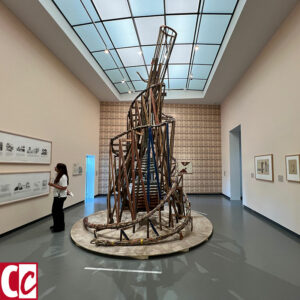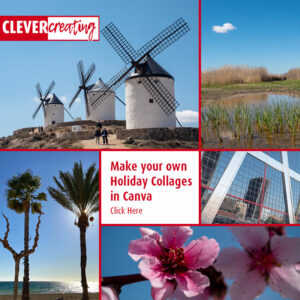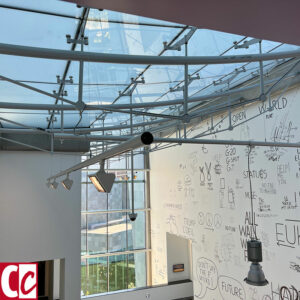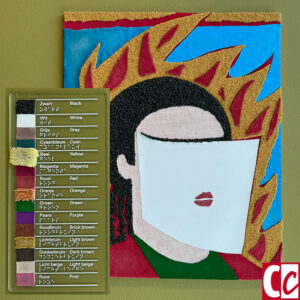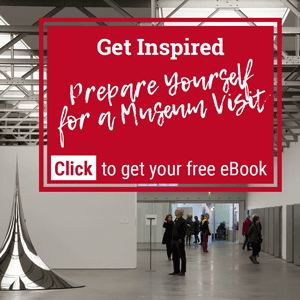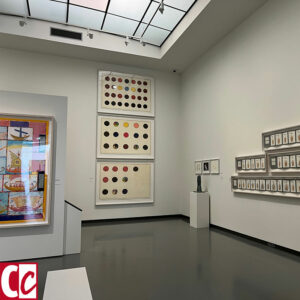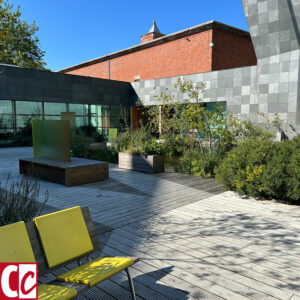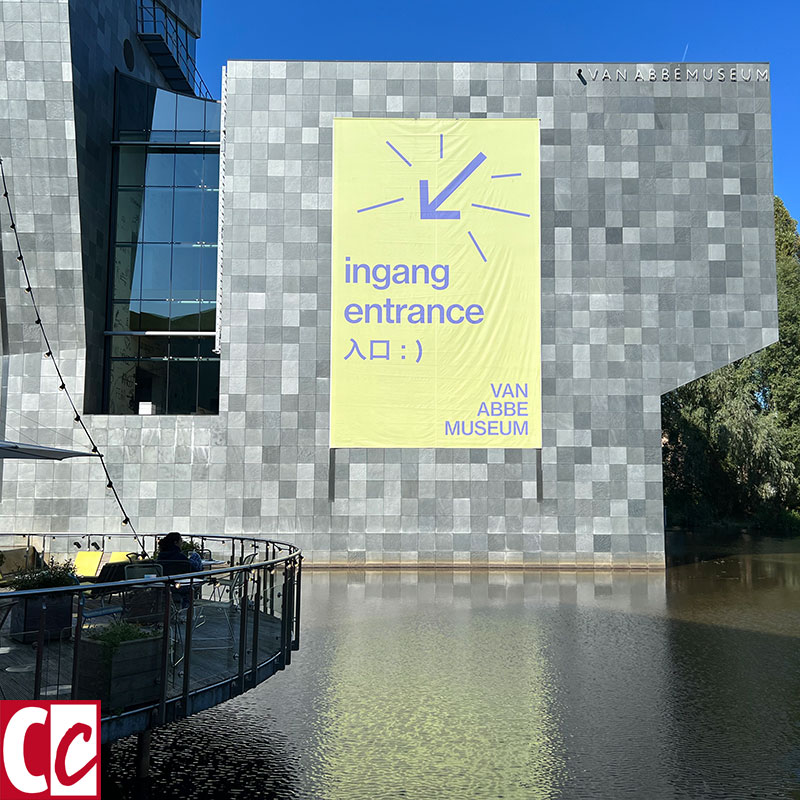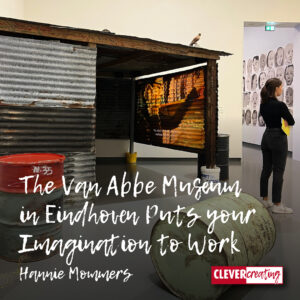
When Tom and I are visiting the Netherlands, we always frequent different museums. The Van Abbe Museum in Eindhoven is regularly on our list.
The museum houses modern art in the form of paintings, drawings, sculpture and video art. The building is fantastic on the inside. There are quite a few different exhibitions, both short-term and long-term, so there is always something that really appeals to us.
I have an important criticism that I will address in this article, but it has little impact on my feelings. It is a fantastic museum that is well worth a visit.
Some of the links are affiliate links. As an affiliate associate, I earn a small commission when you purchase any of the products offered through the shared links at no extra cost to you. This helps me to maintain this website and I thank you for supporting me.
Table of Contents
A cigar manufacturer as an art collector
Some entrepreneurs with money collect art and if they put their mind to it build a great collection. Henri van Abbe was someone like that.
This cigar manufacturer started buying paintings by contemporary painters as early as 1909. He turned out to have a good hand in this and built up a great collection with work by Jan Sluyters, Carel Willink and El Lissitzky, among others.
In 1936, Van Abbe decided to make part of his collection visible to the residents of the city of Eindhoven. He had a museum built at his expense and made money available in the first few years after the opening to purchase new pieces of art.
Related: Discovering 3 Fascinating Cultural Hotspots in Tilburg, the Netherlands
New demands in a new time
At the end of the 20th century, the old museum had become too small for a modern museum policy.
The municipality initially wanted to replace the building with a new construction, but this justifiably generated strong protests. The old building was put on the Dutch list of national heritage sites in 1997.
Ultimately, a new wing was constructed behind the old building. The new building, opened in 2003, is 4 times as large as the old building, offering many more exhibition opportunities.
If an old building is expanded, there are 2 options.
- The style and materials match the old building;
- The design and materials are the opposite of the old building.
The current trend in the Netherlands is to opt for the second choice, as is visible in the Van Abbe Museum.
Special programs
What I really love about the Van Abbe Museum are the special programs they have organized for certain groups of people.
Multi-sensory
For example, there is a multi-sensory tour for blind, visually impaired, deaf and hearing-impaired people. The works of art selected for this purpose can also be admired by ‘ordinary’ visitors.
Sometimes it concerns an existing work of art, for example, a statue that may be touched. In other cases, a work of art has been recreated with various materials where the tactility corresponds to a colour.
The nice thing about this approach to art is that even as a sighted person you can view a work of art in a completely different way than usual.
Spraakmakend van Abbe
There is also a guided tour for people with aphasia and brain damage by an expert together with an art historian.
Usually, we share our experiences using language. But what if you can no longer do that due to brain damage?
Onvergetelijk van Abbe
This is a guided tour for people with Alzheimer’s and their caregivers. If you have always been a lover of art, then memories about it are in your long-term memory. People with Alzheimer’s can draw on that.
Another advantage is that looking at art stimulates the brain. Research shows that this has a positive effect on our health.
My father had Alzheimer’s, which is why this program appeals to me so much. Although I would never have done this program together with him, because he was not into art at all. Instead, every week I went for a walk in the woods with him and a group of fellow sufferers and their caregivers to walk and do exercises. Moving also has a positive effect on those suffering from Alzheimer’s.
Onbeperkt van Abbe
These tours are all part of the umbrella program Unlimited van Abbe. In addition to the 3 I have listed here, there are more possibilities. Take a look here to see what interesting perspectives this provides.
All tours are free, although you do need an entrance ticket to the museum.
Related: Is the Remote Situated Kröller-Müller Museum Worth Visiting?
The flaw of modern architecture
I have 2 hobby horses when it comes to architecture. Can the entrance be found and what is the accessibility for people with mobility problems?
In old buildings such as churches and castles, the entrance is always clear and marked. All visible and unconscious guidelines run in the direction of the entrance or the door is emphasized by an architectural element around it.
Modern architecture is characterized by the fact that finding the entrance is often a puzzle. And if a building like the new wing of the Van Abbe Museum needs an immense sign on the wall to make it clear where the entrance is, then something really went wrong with the design.
However, the emphasis of the entrance in earlier architecture was almost always by means of an elevation and therefore a staircase.
This makes entry more difficult for wheelchairs and strollers. Contemporary architecture takes this into account.
Lively van Abbe Museum
Museums are inspiring anyway, although there is a difference in atmosphere. One museum seems more vibrant than the other.
It is clear that I really like the character of the Van Abbe Museum. It’s always busy, so apparently, more people think so.
In 2023 the price was €13. Dutch museums don’t have a discount for seniors like Spanish museums do. That’s because Dutch art lovers usually have a Museum Pass, which gives free entrance to a lot of museums.
Which is your favourite museum? Tell me in the comment box below.


